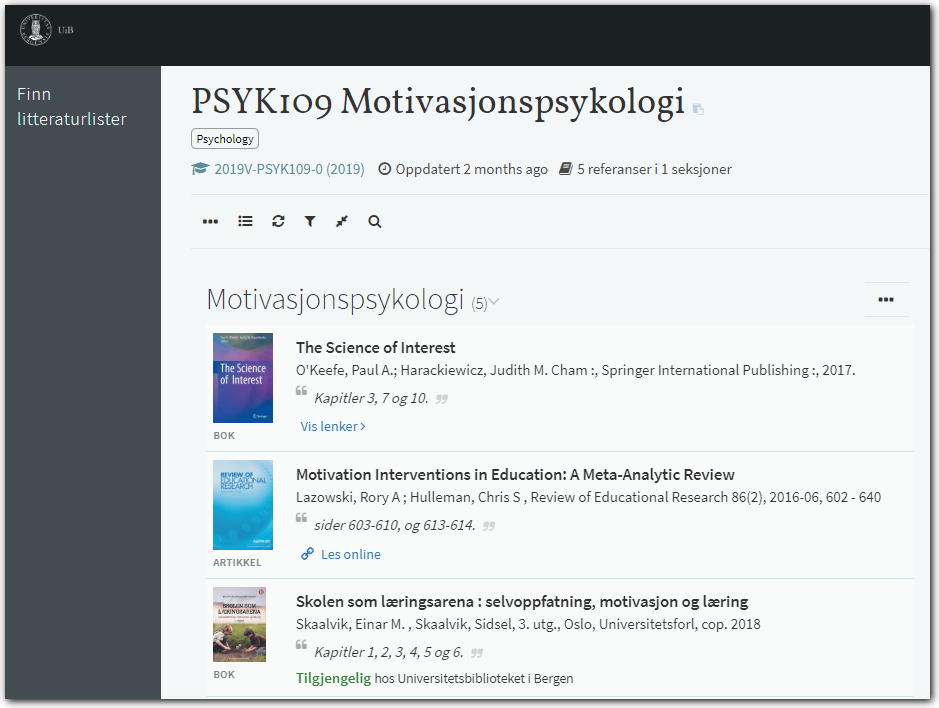Digital reading lists to be implemented across UiB
All the faculties at UiB will now start using digital reading lists. Three faculties have already implemented the new system this spring semester.
Main content
Our new digital reading list system is replacing today’s solution for uploading reading lists to Mitt UiB and registration of references to Litteraturkiosken and Akademika. Everything can now be done in the same system.
Why are we doing this?
The creation and distribution of reading lists has up until now involved a lot of manual processes. The purpose of a digital system is to make the reading lists a better tool for the students, and at the same time simplify the processes linked to reading lists for the departments. The same system is also being implemented by many other Norwegian universities and colleges.
How does the system work?
The system is called Leganto and it is a tool for creating, managing and publishing reading lists, where references can be imported from other sources. Access to the literature is displayed either by location and availability in the library, or with links to digital versions. When published, the lists will automatically be available for the students from the course page in Mitt UiB.
What are the benefits of a digital reading list?
- Less manual registration
- References with assured quality
- Easier registration of material to Litteraturkiosken
- Automatic reporting to Akademika
- One master version of the reading list, changes will automatically be updated everywhere the list is integrated
- Clear information to the students regarding availability of the literature
- Better communication between all involved participants
See UiB’s user guide or the vendor’s video for more information on the system.
See also a reading list example.
Deployment of the system
During autumn 2018 the system was deployed at the Faculty of Mathematics and Natural Sciences, Faculty of Psychology and Faculty of Social Sciences, for lists for the spring semester courses. The rest of the faculties will now follow, with lists for the autumn semester 2019. Detailed information on the system and training will be sent out to instructors and student administrations.
